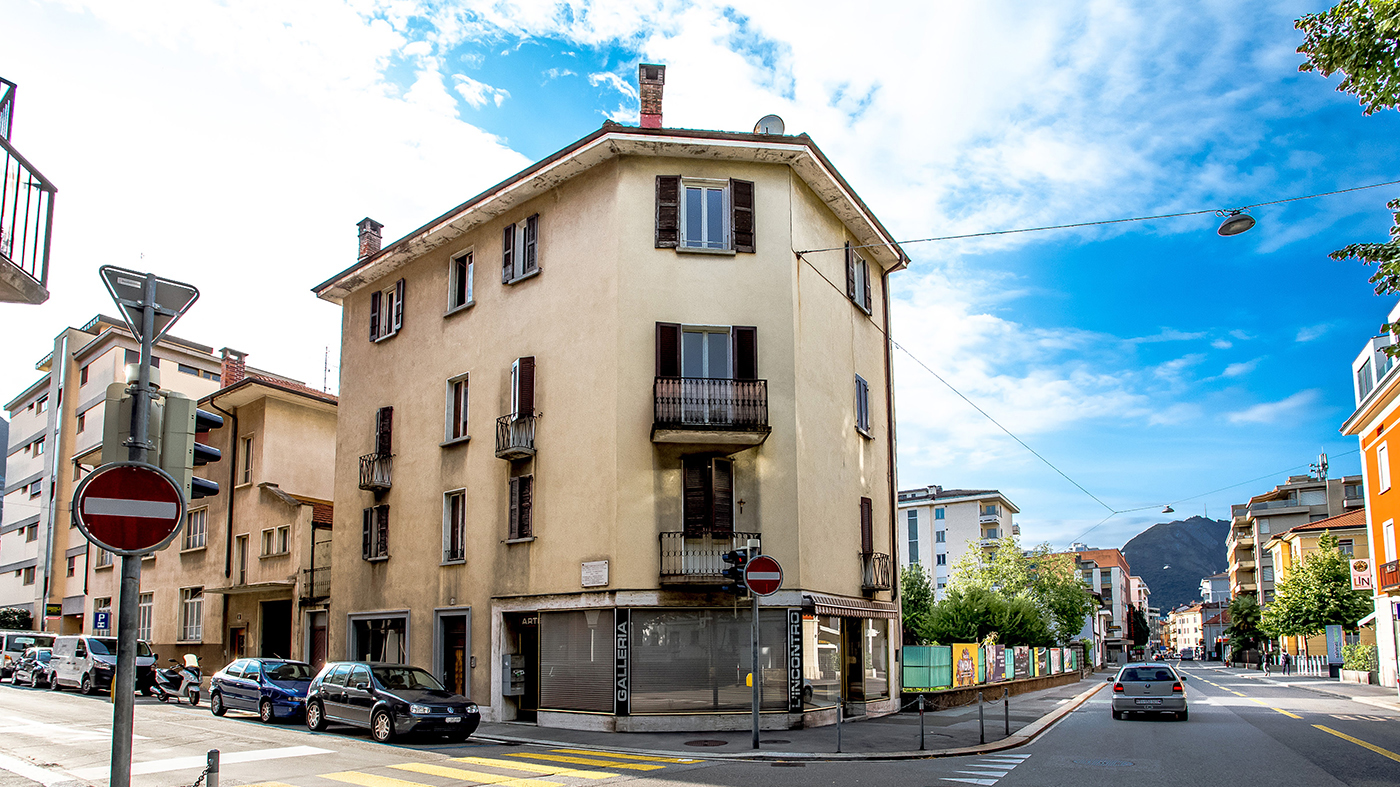History
In the past, the settlement north of the old town consisted of houses clustered around a mill powered by the Roggia dei Mulini, which collected water from the Vira Valley and the Bavosa stream at the Vignola and Beltramina (a watercourse that now flows underground).
Connections to the city center have been ensured since 1896 by a tram line. In the 1950s, the new Via Zurigo was constructed south of Piazza Molino Nuovo to facilitate easier east-west connections.
From the 1930s, significant urban transformation began, with residential developments along the main roads of Via Trevano, Via Zurigo, and the Madonnetta area. The most built-up area is around Piazza Molino Nuovo, while the Castausio hill remains predominantly residential. The flat part of the district is characterized by villas alongside working-class apartment buildings (in Via Trevano, Via Marco da Carona, and Via Beltramina), artisanal shops, workshops, hardware stores, and wood and confectionery factories (such as the Stella chocolate factory). Green spaces remain plentiful, so much so that in the 1960s, living here was still described as living in the countryside.
Among the public infrastructure built in the district in the 20th century are the Molino Nuovo schools in 1905, the kindergarten on Via Ferri in 1934, the new Ospedale Civico (Civic Hospital) of Lugano (1909), and the Municipal care home (1910). Additionally, the municipal cemetery was relocated to Cornaredo, and the stadium was constructed in 1951, marking the first piece of the Lugano Sports Center. In 1978, Casa Serena for the elderly and Casa Primavera for children and youth were established, laying the foundation for the city’s modern social policy.
In recent years, Molino Nuovo has welcomed the USI - Università della Svizzera Italiana in the former Ospedale Civico building, complemented by the new constructions of the university campus.
Places of interest
In the Molino Nuovo district, a short walk from the university campus, stands the Church della Madonnetta, a beloved landmark for many residents of Lugano.
In the early 18th century, at the initiative of Canon Giulio Rusca, the foundations were laid for a small votive chapel adorned with frescoes of the Holy Family, Saint John, and the Lamb. The chapel, surrounded by greenery, was located on the edge of a little-used road. The Madonna’s image preserved in the church quickly became a popular pilgrimage destination for Lugano residents. By 1726, the demand for a larger oratory, known as dello Stradone, led to the construction of a building with two altars: one dedicated to the Sacred Heart of Jesus and the Blessed Virgin, and the other to Saint John Nepomuk. From 1747, the Confraternity of the Sacred Heart of Jesus began its activities there.
Since then, the architectural structure has undergone various internal modifications, including the addition of a narthex and a choir loft. After a fire, the original wooden altar was replaced with the current marble one, designed by Paolo Zanini and crafted by sculptor Pietro Andreoletti from Porto Ceresio.
Over time, the Church of the Madonnetta became too small to accommodate the faithful of the rapidly growing district. Under the initiative of Don Annibale Lafranchi, construction began in 1922 on what would become the Church del Sacro Cuore (of the Sacred Heart). During this period, the fate of the historic Madonnetta was threatened: a variant of the urban plan called for the demolition of the religious building to allow for the expansion of what was then Via dei Prati (now Via Simen). The strong attachment of the local population ultimately saved it. In 1963, the church was partially listed in the Cantonal Register of cultural heritage of Ticino.
Further restorations throughout the 20th century did not alter the church's overall structure. However, urbanization profoundly changed the context of its original 18th-century surroundings. Nevertheless, upon approaching the building, one can still recognize its original volumetric arrangement.

The English version of this page was created with the aid of automatic translation tools and may contain errors and omissions.
The original version is the page in Italian.